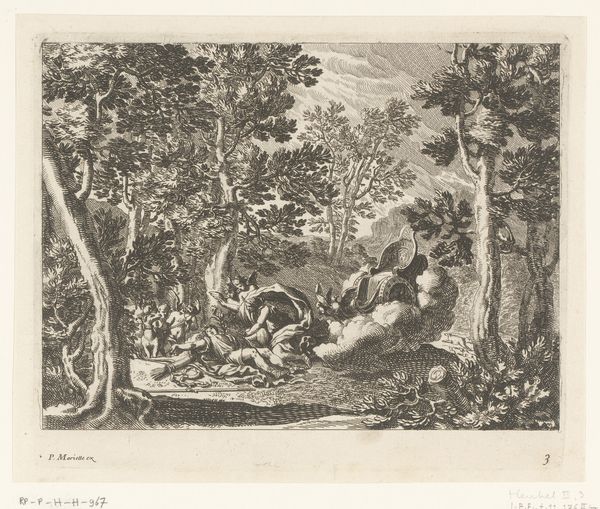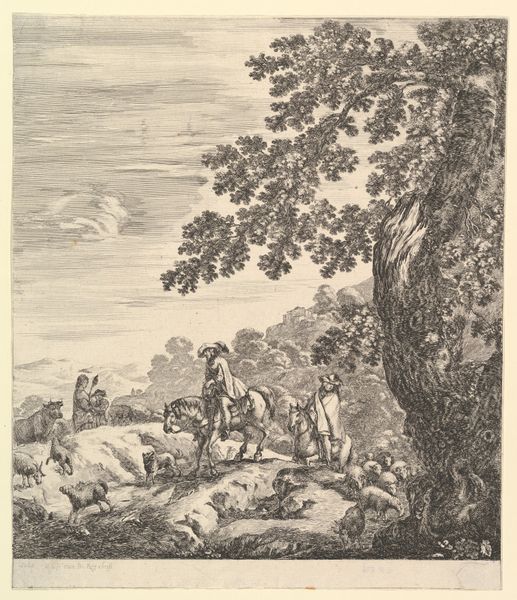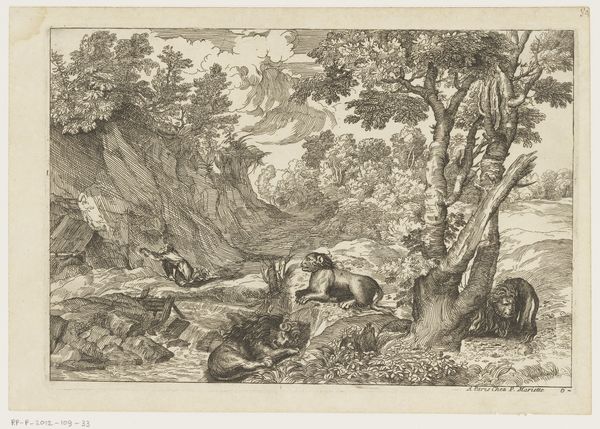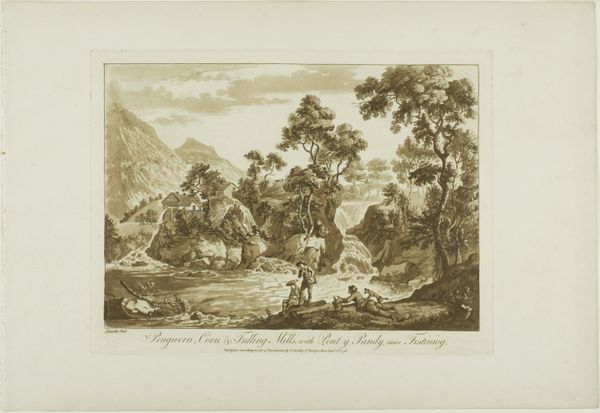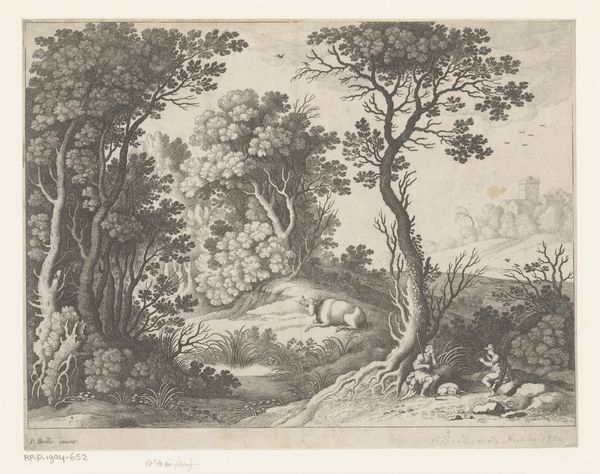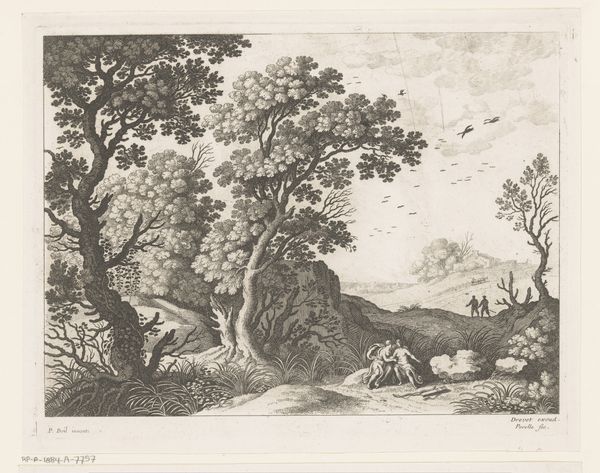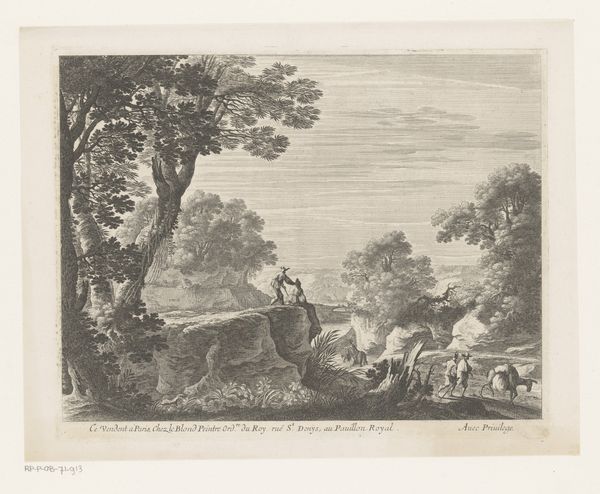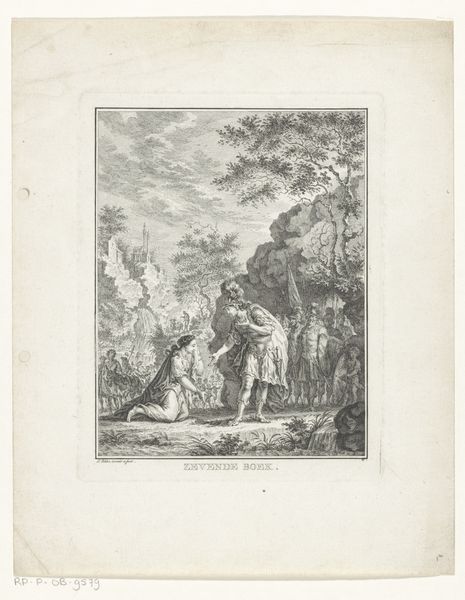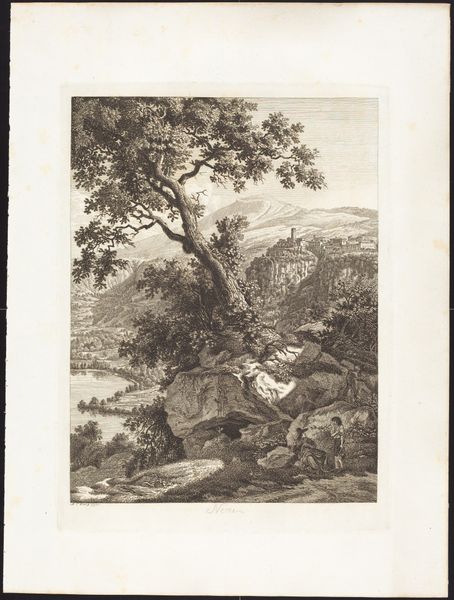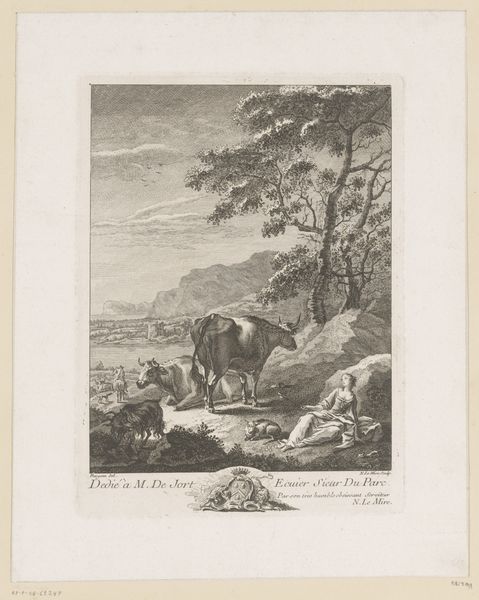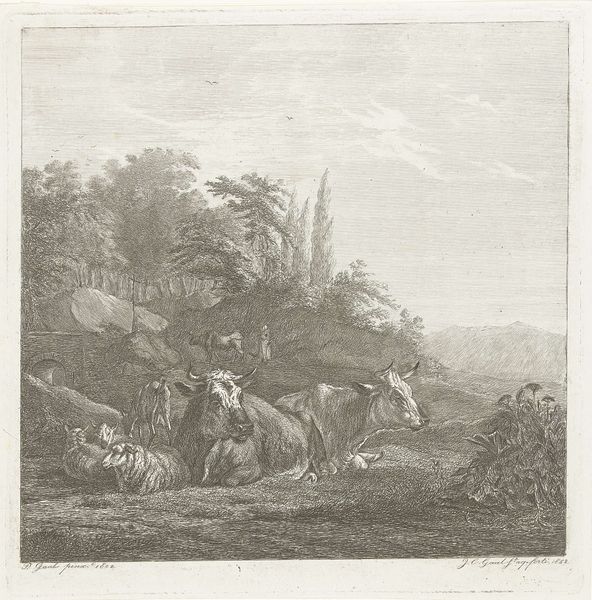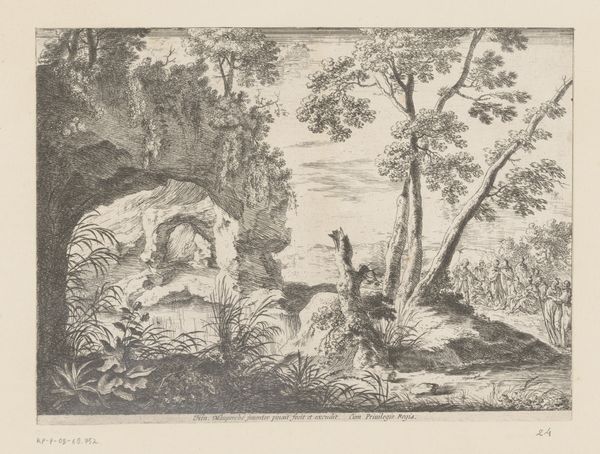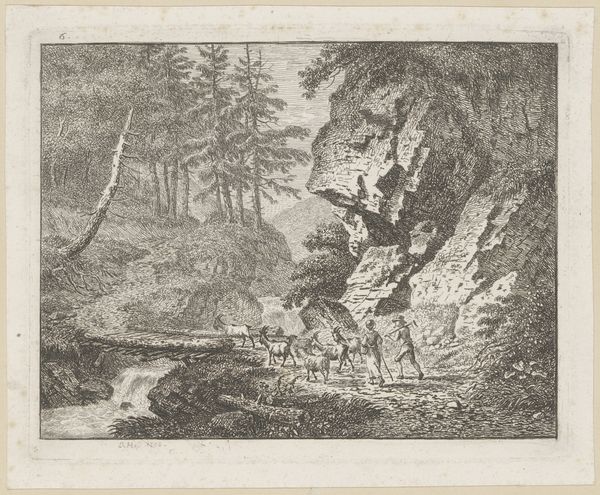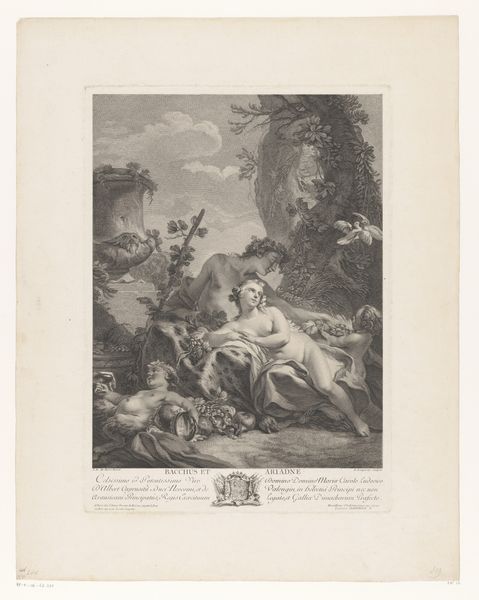
Heuvelachtig landschap met twee mannen bij een steen 1717 - 1783
0:00
0:00
jacquesphilippelebas
Rijksmuseum
engraving
#
neoclacissism
#
old engraving style
#
landscape
#
personal sketchbook
#
genre-painting
#
engraving
Dimensions: height 143 mm, width 160 mm
Copyright: Rijks Museum: Open Domain
Curator: Here we have "Heuvelachtig landschap met twee mannen bij een steen," or "Hilly landscape with two men by a stone," an engraving dating from sometime between 1717 and 1783. It’s part of the Rijksmuseum collection and is attributed to Jacques Philippe Le Bas. What’s your immediate take on it? Editor: There's a stillness to it, isn't there? A rather peaceful landscape punctuated by this imposing rock. I notice immediately the tonal gradations achieved purely through line work; that meticulous crosshatching suggests depth and form beautifully. Curator: Absolutely. The engraver's craft is paramount here. The production of such prints during that time involved a specific labor structure; printmakers often worked collaboratively, or reproduced images for wider dissemination – acting as a kind of proto-mass media, popularizing imagery among burgeoning literate classes. Editor: Indeed. The very precision speaks to the engraver's mastery of the tools—the burin slicing through the metal, demanding not just skill, but a deep understanding of visual translation. But I'm drawn to the light. It's not overly dramatic but subtly defines the figures and the forms in the landscape. Notice the tree framing the scene; it guides the eye. Curator: Right. Consider the role of printmaking in disseminating neoclassical ideals at this time, and how Le Bas contributed to the era's artistic dialogues through printed works aimed at a specific demographic with cultural aspirations. The availability of these prints allowed the aesthetics to trickle down, affecting design and fashion among the emerging bourgeois. Editor: Precisely. The medium here is central to how it achieves meaning. Though in monochromatic hues, it feels alive. And although not strictly narrative, the two figures generate intrigue – who are they and what’s their story? Curator: True! I tend to focus more on what it signifies within production processes and the social matrix within which the artist and the craftperson created. I do, though, concede it has its subtle charm; it shows how aesthetic ideals were constructed and consumed in a pre-digital world. Editor: Well, that’s a refreshing approach that marries formal composition and wider consumption habits nicely. Thanks!
Comments
No comments
Be the first to comment and join the conversation on the ultimate creative platform.
